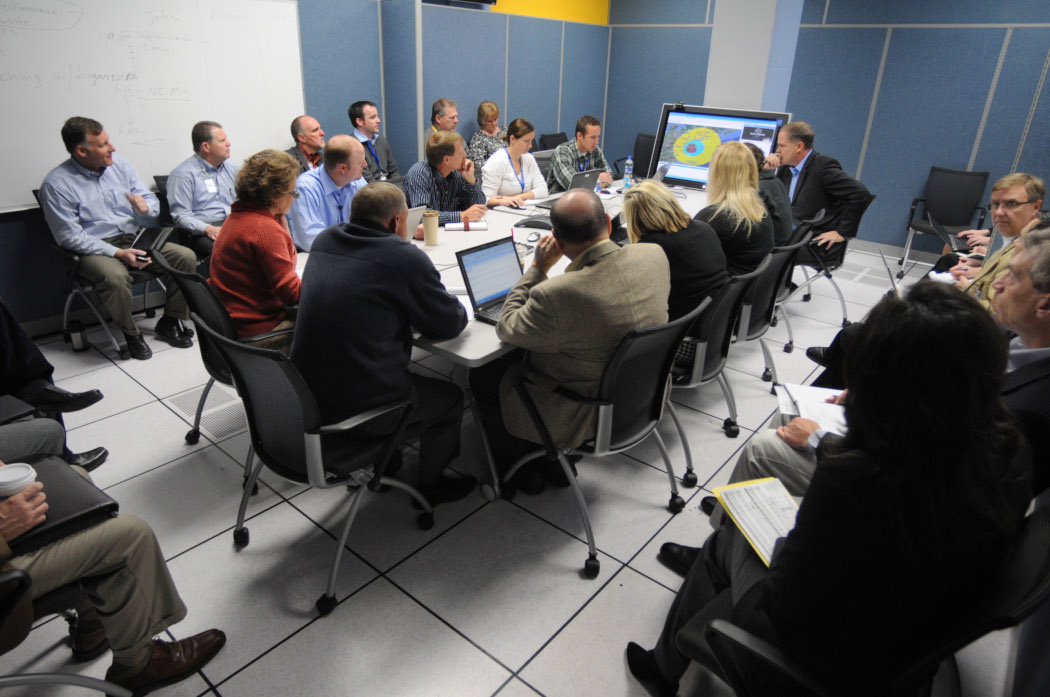Where are you right now as you read this article?
Are you are sitting at a coffee shop or on the showroom floor? Maybe you’re relaxing at home, sitting in your parked car or at any one of a thousand locations where you might have a free moment. I wrote this paragraph on an iPad, waiting for my six-shot Americano (don’t judge me) at a small coffee shop in middle America. I finished the article in the wilds of Minnesota in between video meetings.
What I’ve described isn’t a radical shift in the way we work. We have operated this way for more than a decade. Most of us knowledge workers are now a collection of remote-working, mobile-wearing, flex-time-needing, Wi-Fi-loving, 5G-wishing, high-performing individuals who bring their own devices and personalities to the job every day.
The way we work isn’t the big mystery that I’m trying to solve when I wake up. The important question that I want answered is why we work this way. Why do I choose one app over another? Why do I always walk down the same path to get to my desk? Why do I like using my iPhone earbuds more than my Bluetooth headset? And why do I always leave them in my pocket when I do laundry?
This fundamental change in my thinking is important as I shift from looking at AV as a product or a service and begin understanding that AV is an experience that integrates with the lives of employees and customers. The AV industry and its products, designs, support and services are in a necessary paradigm shift—from contained content consumption to a geographically diverse connected experience. The impressive fact is that we already have the information we need to move forward. It is what we do with this information and how we analyze it that will create the next level of personalized customer experience.
We are inundated with data points daily. Every device, product and platform we touch wants to gather or give information. At times, I find myself struggling to tread water in a deluge of data. Perhaps it’s time for a swimming lesson.
Over my career leading the AV experience at several large companies, I have learned that using data helps direct and enhance product lines and services. There was some rough sailing in the beginning—to say the least—but, as I have grown in this space, I’ve learned a lot along the way and want to share some lessons.
Before I go on, I will add that, to keep this shorter than a Tolkien chapter, I’m skipping over the legal/governance/privacy issues and focusing on data. That’s not to say that those issues are not important—trust me, they may become your biggest challenge. But rather than focus on those, today I am simply sharing my roadmap and examples of how I am using data to enhance the customer experience in both physical and virtual meeting spaces.
Ready? Let’s jump in and learn how to swim.
Lesson One: Don’t Be Scared To Get Wet: Product-Usage Data And Where To Put It
We need to start swimming somewhere. Where better to start than a data lake? The simple definition of a “data lake” is a storage repository that holds a large amount of data in its native format. In this context, let’s just say it’s a big hole where we can dump water (or data). Unlike a data warehouse that uses a hierarchical structure like files or folders, a data lake is flat. Having no waves makes it easier to swim, right?
Keeping this analogy going, looking at a large body of water can seem intimidating when one is new to swimming. So, we should probably build a dock. What’s great about having a flat lake is that we can build any kind of dock we want. Let’s define the dock as the tools and technology that enable the analysis and aggregation of data across products and platforms in an attempt to understand the user experience. Simply said, we can use this data to develop a better product.
Why is this construct important in the AV world? Let’s break it down. In my opinion, we need manufacturers to build telemetry into their products. From face detection in cameras to AI chipsets in media players, we are seeing this become a reality. However, issues continue to exist centered on retrieving the data in a useable format. Many times, the data can only be retrieved using a proprietary or third-party platform. This might be useful at first, but it quickly becomes a roadblock. As more companies bring on data scientists and specialists, it will be important for them to collect usage information quickly and in its raw format. REST APIs are useful, but they often limit us to how others have formatted and used the data. This can make waves in the lake.
Lesson Two: Getting Comfortable In The Water: Cross-Product Data Usage
Now the water’s above our waists, and we’re gathering data on specific product usage. But how many enterprises are just using one platform or one product? The second lesson focuses on taking in data from multiple products and using that data to understand and build a better experience.
The best way to explain this lesson is to examine a use case. To make it simple, let’s look at UC client usage from one individual: Swimmer One. We can see Swimmer One is using her UC client, but, instead of using her computer audio, she is having the client dial back into her cellphone. This may be an issue, as this behavior will add an additional cost to the company while VoIP usage is free. There could be many reasons why Swimmer One is doing this. Is there lower-quality audio on her laptop over VoIP? Did her headset disconnect, or did the client crash? Maybe she doesn’t know her behavior adds cost.
In my experience, this is where cross-product data can help us. With the ability to take data from multiple products, we start to have deeper insight into Swimmer One’s user experience.
Let’s say in this case we have data from the UC client in a call and data from her laptop client. The laptop client shows that no headset is attached to the device. With both datasets being sent to the data lake, we begin seeing correlations between both product experiences. Maybe we need to order her a headset, send a notification with information on where she can get one or ask her neighbor to quiet down.
Here’s one more example of cross-product data analysis. Let’s take the data from the camera in a conference room. That camera can tell how many people are in the room at a given moment. I can take the data from the room-booking platform and match that to how many people the room holds. Just like that, I can begin solving meeting room space issues by right-sizing the experience. The next step would be to use artificial intelligence (AI) to do that work by nudging users to choose the right room in the first place. You can begin to see that there are no limits to what we can discover about what our users need and what we can do to enhance their experience.

Lesson Three: Learning A Swimming Stroke: Combining Product Data With Other Contextual Data
Now you’re comfortable in the water. This is an exciting place to be! After working out some of the foundational items, you’re ready to start swimming in your data lake. This is the opportunity to start leveraging other data platforms to receive a deeper context to the experiences we are creating. The easiest way to explain this is by examining datasets that, as AV people, we often don’t use. For instance, let’s look at data from a human resources platform. We can take the information found there and begin to build personas around our users. We can create a persona for everyone from remote workers to executives and across tasks. Defining these personas allows us to turn a product experience into a personalized experience. This is when things get interesting!
Take remote workers as an example. If we dive into the data, we begin to understand they will need a certain device or software. If we dig further, we could possibly discern they will need tools that allow them to work anywhere without restriction, or that they will be using their mobile app more than anything else. These personal details will allow us to engineer solutions that give our users what they need, when they need it.
Other contextual data we can look at is physical movement through the office. Using heat mapping, we can see what spaces are being underutilized or overutilized. We can analyze environmental platform data at the same time and make decisions on where and when to cool, heat or light a meeting space. We can even use this data to prioritize which conference room spaces are slotted for a refresh to maximize impact. We can also see that a certain persona may prefer one conference room over another. We then can investigate the reasoning behind these behaviors and take that feedback to engineers who will enhance and personalize the experience with the next iteration in our product lifecycle.
Lesson Four: From The Doggie Paddle To Synchronized Swimming: Leveraging Contextual Data With Smart Metrics And Key Performance Indicators (KPIs)
We’re swimming! Now we’re ready to master those strokes. We’re gathering data from multiple products and platforms and using that data as needed. We’re analyzing and using it to guide the enhancement of our user experience. We can now compare data from the time a meeting is scheduled to start with the actual time a meeting connects. If we see a gap in those times, we could conclude there may be issues with the ease of starting a meeting. If we add contextual data that shows it is mostly the finance persona in this gap, we can focus in on what those specific users will need to optimize their performance. Perhaps we should emphasize training. Maybe we have the wrong tool in place. What is clear is that using this data will improve decision-making as it pertains to how we enhance our room design or why we place digital signage in a certain location.
What are the next steps? We want to leverage this data to do more than just enhance the experience. All this new cross-product contextualized information can be used to control costs, drive sales or create a better work/life balance. We can align this data with business goals to make sure we are driving change. The possibilities for enhancement are nearly endless.
The next few years will continue to be an exciting time for our industry. The rate of technical change is always increasing. To stay ahead of the changes, we must use data as a tool to help ensure we are making user-impacting decisions as quickly and effectively as we can. It’s certainly not easy to achieve the level of usefulness we require from the data lake. There is a lot of work to do to change technology and culture. But, in the end, it will be worth it. Then, once we’re done swimming, we can contemplate dipping into a hot tub full of AI.
